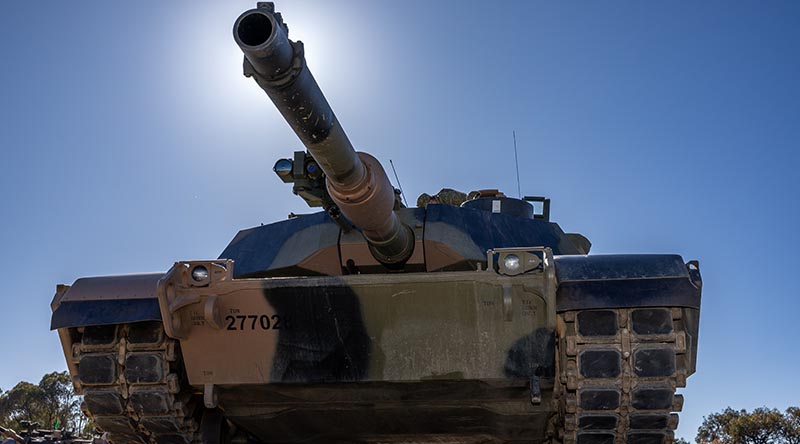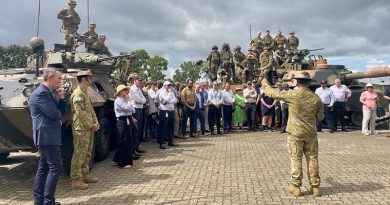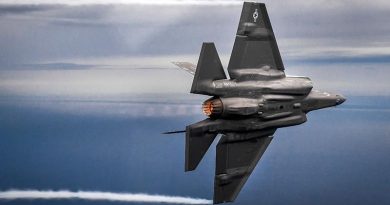Why Doesn’t Anyone Understand What’s Been Done to the RAAC?
Share the post "Why Doesn’t Anyone Understand What’s Been Done to the RAAC?"

We used to be a Corps focussed solely on developing the skills needed to close with and out-manoeuvre the enemy; now we’re a mixture of combat and non-combatant units.
The role of the RAAC is “to locate, identify, capture and destroy the enemy, by day or night, in combination with other arms, using fire and manoeuvre”. The Corps used to provide the Army with close fire support, reconnaissance, and armoured mobility to infantry. In its penultimate organisation, it comprised three Armoured Cavalry Regiments (ACRs); each unit comprising three squadrons: tank, cavalry and armoured personnel carrier (APC).
The infantry became responsible for their own armoured mobility in 2017, wiping out one third of the RAAC in a single stroke. This wasn’t a surprise, but rather something known well in advance; something that had been (supposedly) anticipated and planned for by those with the best interests of the RAAC and the Army at heart.
So, what was everyone doing? What plan did the RAAC develop to manage the new canvas?
[It should be noted that the ACR ‘model’ had not been a success, primarily because of the difficulty in maintaining a fleet of 59 M1A1 tanks across three different locations. Recognising this, 75 replacement M1A2s were purchased.]
The question which had to be addressed: ‘What are the options for the best grouping and employment of three RAAC regimental headquarters (1 Armd Regt, 2 Cav Regt; 2/14 LH (QMI) Regt, plus three tank and three cavalry squadrons?’).
The simple options would seem to be, either maintain three units, each with a tank and cavalry squadron; or reduce to two units, each with three tank or three cavalry squadrons.
Given that, as a result of the 2023 Defence Strategic Review (DSR), 3 Brigade in Townsville was to become an armoured brigade … many would obviously opt for the two-regiment solution, with 2/14 LHR (QMI) returning to being an ARES unit. [It had become an ARA unit in 2005.] While this would make 3 Brigade a complete armoured brigade, forcing 2/14 LHR (QMI) to become an ARES unit after 20 years, would be a hard decision to make.
When it came, the Chief of Army’s decision was a surprise; one deliberately kept secret until the release of the DSR.
Those responsible decided to: forget 1 Armd Regt’s heritage and give it a new non-combatant role; allocate 2 Cav Regt four squadrons (two tank and two cavalry); and allow 2/14 LHR (QMI) to increase its strength to three squadrons. (A total of seven RAAC squadrons might have been possible within any manpower ceiling, because of the smaller size of 1 Armd Regt in its new role.)
Today, the RAAC comprises two regiments capable of fulfilling the RAAC’s role on the battlefield: 2 Cav Regt, a divided unit with dual roles (tank and cav); and 2/14 LHR (QMI), a homogeneous regiment with three cavalry sqns. A total of five cavalry and two tank sqns. [In terms of role, read ‘reconnaissance’ in place of ‘cavalry’. In total, 211 Boxers are to be procured, 133 recon variants and 78 support vehicles.]
How did this come about? Was the recon capability deliberately expanded at the expense of tanks or did ‘lobbying’ contribute to the outcome? Was there a view expressed as to what was best for the RAAC as a whole, or were the various ‘factions’ divided in this regard?
My personal belief is that the RAAC should, in the circumstances, be based on 1 Armd Regt and 2 Cav Regt, each with three sqns of either tanks or recon, and located in Townsville. 2/14 LHR (QMI) should return to ARES status, but include an ARA sqn.
One has to wonder at the ‘negotiations’ which may (or may not) have taken place in the years leading up to the DSR in 2023. Was the possibility of 2/14 LHR (QMI) becoming an ARES unit again, really an option … or did lobbying from ‘vested interests’ hold sway on this? Is the real reason that 1 Armd Regt and 2 Cav Regt are not presently commanding tank and cavalry regiments as part of an armoured brigade in Townsville, due to the fact that no-one was prepared to make 2/14 LHR (QMI) an ARES unit again, even with an ARA squadron? What influence was brought to bear to this end?
Interestingly, 1 Armd Regt’s alternative title is Combat Experimentation Group (CXG). The CXG has been directed to maintain the heritage and traditions of 1 Armd Regt. A combat unit whose survival on the battlefield depends on its ability to outclass its adversary, has an entirely different ‘raison d’etre’ to one whose role is to evaluate new and emerging technology. The bond formed by crews facing adversity under armour, reaches into every corner of a tank regiment and makes it unique. How can this not be understood? How can a non-combatant unit possibly maintain the heritage and traditions of a regiment that has crewed tanks for 75 years (including in combat)? Obviously, it can’t.
[The proposal to re-raise 1 Armd Regt as a tank regiment means that a new CXG will be required.]
Some will have regarded leadership positions as being exactly that, i.e. volunteers, or those appointed to positions such as Head of Corps, advocate in the best interests of the Corps (rather than slavishly supporting the view of the Chief of Army).
Reflecting the ADF’s complete subservience to the chain of command, however, the RAAC Representative Honorary Colonel (Maj Gen M Krause, AM) explains that “to make public statements contrary to a known Defence position is called insubordination”.
Lieutenant Colonel Bruce Cameron, MC, RAAC (Ret’d)
FILE PHOTO: An Australian M1A2 SEP v3 main battle tank. Photo by Corporal Michael Currie.
.
.

.
.
Share the post "Why Doesn’t Anyone Understand What’s Been Done to the RAAC?"




